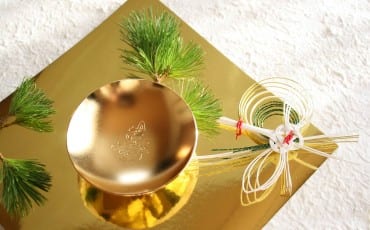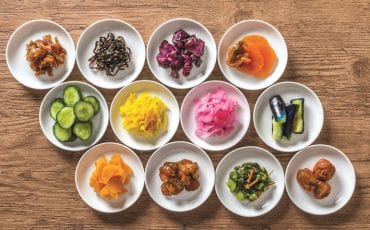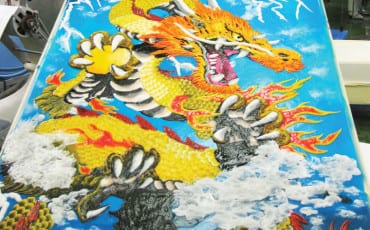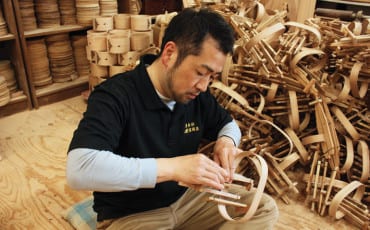Articles
Features
Jan 1, 2016
Fabulous Fukuoka
Faces of Fukuoka
Shuichi Hirakawa
Salt is key to many dishes in Fukuoka – and Shinsaburo Shoten supplies restaurants in Itoshima city and beyond with Mataichi no Shio, natural salt, which has become a local specialty.
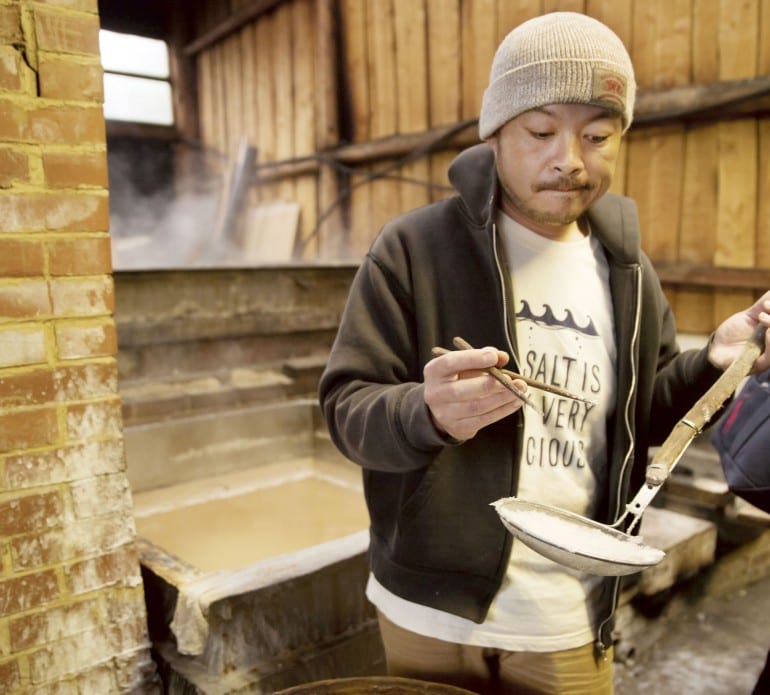
What made you decide to start your own salt factory?
Since we are next to the coast, people in the Itoshima region traditionally produced natural salt from seawater. However, there aren’t many people doing it now. I asked people about the process, read up on the techniques used, and did some research and development. The salt field structure on my land at Kobo Tottan (see page 27) is my own creation; developed after trial and error, and was set up 15 years ago.
How does your salt field structure, and natural salt farming, work?
For 7 to 10 days, water from the sea goes directly into black pipes, and disseminates through the bamboo poles, travelling up and down the structure. From the solution that is collected, we use recycled material for burning timber – which gives the salt a better flavour as compared to gas or electricity – in an iron oven at a temperature of 60 degrees Celsius for two days, to separate the salt from the water. We only take what’s on the top, sifting out the best layer for salt that is neither too bitter nor too salty. We only want people to have the best quality salt, which is why we do not have that much in terms of quantity.
How can we enjoy your salt?
We supply our salt to department stores and high-end restaurants, including The Mandarin Oriental in Hong Kong, and sell it through the Internet. When you’re here at the factory, a must-try is our custard pudding with salt – 80 percent of our customers come here just for it.
Hiromi Nagasawa
Under the label “Hakata Mizuhiki”, she has turned an ancient Japanese art form for special occasions into colourful, modern gifts for everyday.
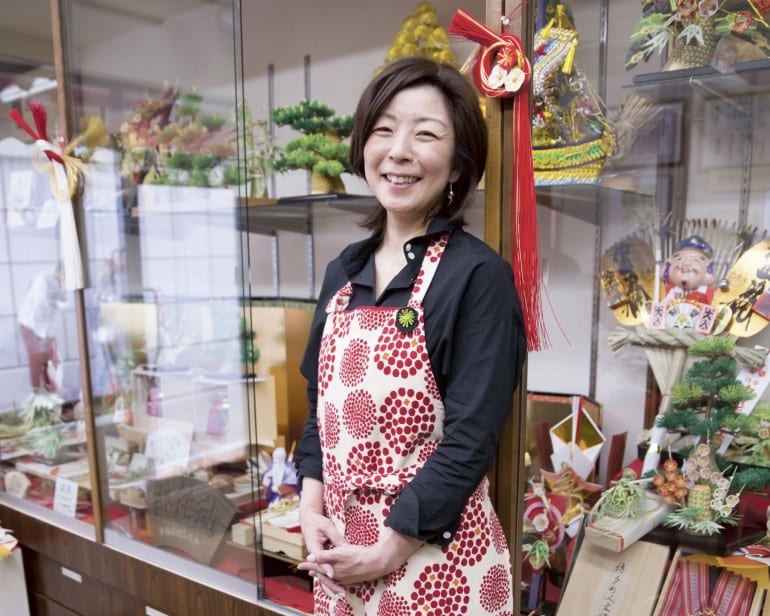
Have you always been interested in mizuhiki – a traditional Japanese paper cord used for gift wrapping?
Mizuhiki has been in my family for two generations, starting with my father, who is self-taught. I used to play around with my father’s leftover materials when I was young, and that’s how my interest in it started.
I used to be a graphic designer, but I started helping out with my father’s business seven years ago. He was going to close down the shop as he had no successor, so I took over three years after doing this full-time.
What inspired you to come up with this idea of continuing a Japanese tradition in a modern way?
Mizuhiki has always been given away during traditional celebrations such as engagements, but I started making them to be used as decoration for sake bottles. I love drinking sake, and thought it would be fun to make mizuhiki for a bottle I was bringing to a friend’s place – and everyone ended up loving it!
Using it as a bow tied around a bottle of sake still carries the meaning of mizuhiki; combined with the choice of ume, which represents happiness since it blooms at the start of spring, it means you are drinking happiness. You don’t need an occasion; this form of mizuhiki can be part of everyday life.
What other plans do you have for reinterpreting mizuhiki?
It’s still in the research and development process, as mizuhiki is very delicate, but I am experimenting with it in the form of brooches. I’m also working on collaborations with other artisans; as well as with companies on corporate gifts, where they use mizuhiki instead of ribbons. It’s a symbol of making the relationship with their client stronger, and it can be re-used as well.
(TEXT Tan Lili • PHOTOGRAPHY ryohei ito)
>>Read more about Fukuoka Food
>>Read more about Fukuoka Sightseeing





